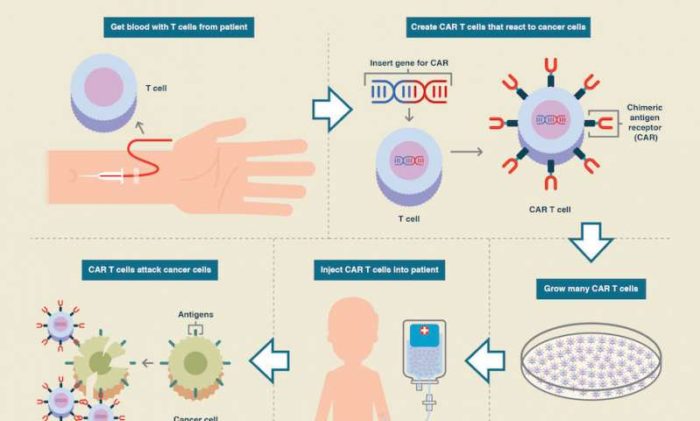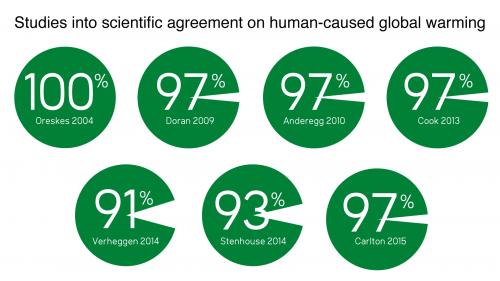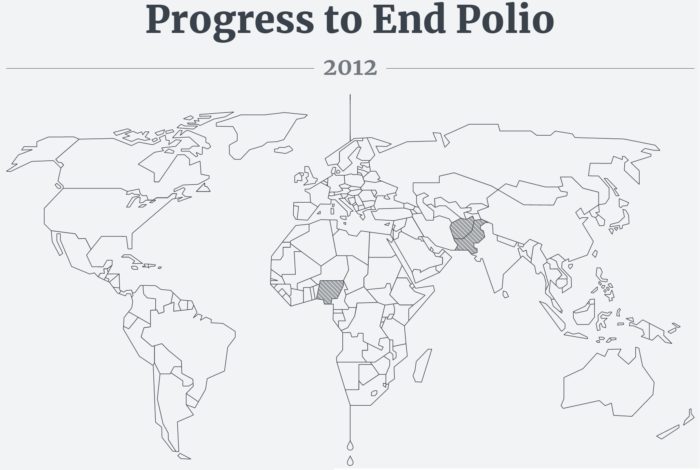Jan
28
2020
 It’s important to properly calibrate your concern over new potential threats. Fear is an adaptive trait that focuses our attention and energy on avoiding danger. Too little fear, and we walk into avoidable risk; too much, and we waste time and energy without reason, perhaps even causing unnecessary harm. Proper calibration requires an objective, factual, and balanced approach. Keep that in mind when reading stories and fearmongering about the new Wuhan Coronavirus.
It’s important to properly calibrate your concern over new potential threats. Fear is an adaptive trait that focuses our attention and energy on avoiding danger. Too little fear, and we walk into avoidable risk; too much, and we waste time and energy without reason, perhaps even causing unnecessary harm. Proper calibration requires an objective, factual, and balanced approach. Keep that in mind when reading stories and fearmongering about the new Wuhan Coronavirus.
First, the genuine concern – this is a legitimate outbreak of a new virus that causes pneumonia and is potentially fatal. This is now the 7th Coronavirus found to infect humans. Four strains cause essentially common cold, a benign upper respiratory infection. Two previously discovered viruses cause more severe illness, the SARS and MERS viruses. SARS (Severe Acute Respiratory Syndrome) started in 2002 in China and over 2003 the epidemic resulted in thousands of cases and 774 confirmed deaths. MERS (Middle Eastern Respiratory Syndrome) first appeared in 2012, in the Arabian Peninsula and has a 30-40% mortality rate. These are serious infections. So it is reasonable to be concerned about the third serious Coronavirus infection. What do we know so far?
The numbers are moving fast, but as of right now there are 4,500 confirmed cases and 106 deaths. All the deaths are in China, there are sporadic cases outside of China (all imported from China) but so far no person-to-person spread outside of China. The virus likely originated from the combination of a bat strain of Coronavirus and an unknown strain, but came to humans through contact with snakes. The infection causes a severe viral pneumonia. Most of the fatalities so far have been elderly, but at least one otherwise young and healthy individual has died from the infection. Infection is spread through water droplets (sneezing and coughing). It is still unclear, with conflicting reports, whether or not the virus is contagious before symptoms present (which would be bad) but the CDC is currently denying this.
Continue Reading »
Jan
27
2020
 There is more mass in the universe, stuff generating gravity, than we can see. This observation lead to the conclusion that there must be “dark matter” in the universe – stuff out there that we cannot see but is exerting its gravitational effect. At least some physicists believe that this stuff may not be a new type of matter, but may be information itself.
There is more mass in the universe, stuff generating gravity, than we can see. This observation lead to the conclusion that there must be “dark matter” in the universe – stuff out there that we cannot see but is exerting its gravitational effect. At least some physicists believe that this stuff may not be a new type of matter, but may be information itself.
How do we know how much “gravity” there is? Mainly by observing the movement of stars, but essentially any observation about the large scale movement in the universe must agree with our calculations about the effects of gravity. These calculations, based on Newton and Einstein’s general theory of relativity, are extremely precise and confirmed by observation. The first one to observe a disconnect between our theories and observation was in 1933, when Swiss astronomer Fritz Zwicky observed the movement of galaxies in the Coma Cluster. When object rotate about each other their momentum is like a force flinging them apart. Gravity has to balance that force with an inward attraction. We can therefore calculate how much gravitational force their needs to be to keep a galaxy cluster together, and Zwicky calculated that there wasn’t enough, but left the question as to how open.
Then in astronomer Vera Rubin made essentially the same observation of the Andromeda galaxy. She found that the stars in the galaxy rotate at about the same velocity regardless of how close they were to the center. Calculations predicted that the closer stars should be moving much faster than the farther stars. In fact, the stars at the outer portions of the galaxy should be flying apart. She concluded there must be dark matter throughout the galaxy creating enough extra gravity to hold the fast moving stars together. In fact, there must be more than 5 times as much of this dark matter than normal matter we can see. Most of the matter of the universe is invisible and mysterious.
Continue Reading »
Jan
24
2020
 What do you call it when you are both excited and pessimistic about something at the same time? Well whatever the word is, that’s what I feel now. Rolls-Royce has announced that it plans to build so-called small modular reactors (SMRs), which could be in operation by 2029. These are small nuclear reactors that would sit on a 10 acre space, about 1/16 the size of a standard reactor. The Rolls-Royce design is not the first one. The US has been developing SMRs of varying sizes, up to 300 MW capacity, and China and South Korea are developing SMRs.
What do you call it when you are both excited and pessimistic about something at the same time? Well whatever the word is, that’s what I feel now. Rolls-Royce has announced that it plans to build so-called small modular reactors (SMRs), which could be in operation by 2029. These are small nuclear reactors that would sit on a 10 acre space, about 1/16 the size of a standard reactor. The Rolls-Royce design is not the first one. The US has been developing SMRs of varying sizes, up to 300 MW capacity, and China and South Korea are developing SMRs.
Actually – small nuclear reactors are not new. We have been using them on nuclear submarines and other vessels for years. What is new is commercial SMRs for grid power. I could not find any in operation currently. The US company NuScale, has approval for a design and could be operational by 2026. They estimate the electricity costs at $65 per MW hour, which is not far from the current costs of solar at $60, and offshore wind at $50. Of course, wind and solar prices are dropping, but the hope is that economies of scale will also drop the cost of SMRs.
There are also potential advantages of SMRs over renewable and traditional nuclear power plants. Regarding renewables, while the prices are dropping now once we saturate the grid with renewable energy, something like 30% penetration, in order to increase the grid share of power from renewables you need some combination of two things, grid storage and overcapacity (sharing energy across the grid). The latter also requires a massive grid update. So the effective cost of renewables will start to skyrocket. The solution is to make up the rest of our energy infrastructure with on-demand energy sources. We can try to maximize hydroelectric and geothermal (which are geographically limited), but for now that means fossil fuel or nuclear.
So realistically, over the next several decades at least, the real choice we face is not between nuclear vs renewables, it’s nuclear vs fossil fuel – and I think the answer here is a no-brainer (I will return to this below).
Continue Reading »
Jan
23
2020
 The popular belief is that an asteroid impact caused the mass extinction at the K-Pg (formerly K-T) boundary 66 million years ago. This is the mass extinction that killed off the non-avian dinosaurs along with 75% of species on Earth. However, in reality there is a raging scientific debate about the exact causes of the extinction event. The two contenders are the asteroid impact, which we know happened right at that time, and extreme volcanism at the Deccan traps in what is now India.
The popular belief is that an asteroid impact caused the mass extinction at the K-Pg (formerly K-T) boundary 66 million years ago. This is the mass extinction that killed off the non-avian dinosaurs along with 75% of species on Earth. However, in reality there is a raging scientific debate about the exact causes of the extinction event. The two contenders are the asteroid impact, which we know happened right at that time, and extreme volcanism at the Deccan traps in what is now India.
Scientists fall along a spectrum in this debate. At one end there are those who believe the asteroid was the main event, and the volcanic eruptions played little to no role. At the other end are those who believe that climate change caused by the volcanoes, with both global warming from the CO2 and acidification of the oceans, was the main driver of extinction. The asteroid impact, at most, was the coup de grace. In between are those who feel that both events were important to extinction to varying degrees, and we’re just trying to sort out their relative contributions.
The evidence has gone back and forth on this debate, although I think it has been strongly favoring the asteroid impact as the dominant factor. A new study contributes to this debate, and heavily favors the asteroid impact. In fact, the authors argue that their evidence suggests the volcanism at the Deccan traps played no role at all in the extinction. The modeled the outgassing from the Deccan traps and compared the models with the evidence to see which one fit the best. This is what they found:
We found support for major outgassing beginning and ending distinctly before the impact, with only the impact coinciding with mass extinction and biologically amplified carbon cycle change. Our models show that these extinction-related carbon cycle changes would have allowed the ocean to absorb massive amounts of carbon dioxide, thus limiting the global warming otherwise expected from postextinction volcanism.
Essentially the outgassing from the Deccan traps started, according to their model that best fits the evidence, 350,000-200,000 years prior to the impact and extinction. This caused a global warming event of about 2 C, which further lead to a migration of many species toward the poles. However, the outgassing and warming stopped prior to the extinction, the Earth cooled back to its prior baseline, and the various species returned to their previous locations. So the ecosystem has returned to its prior baseline, without any mass extinction, and then the asteroid hit and caused the mass extinction all by itself.
Continue Reading »
Jan
21
2020
 The BBC headline reads: Immune discovery ‘may treat all cancer’. Most health headlines, even of legitimate scientific discoveries, tend to be overhyped. All health discoveries, apparently, will either eventually cure cancer or the common cold. This headline is also overhyped, in my opinion, but this is a legitimate discovery with possible implications for future cancer treatment.
The BBC headline reads: Immune discovery ‘may treat all cancer’. Most health headlines, even of legitimate scientific discoveries, tend to be overhyped. All health discoveries, apparently, will either eventually cure cancer or the common cold. This headline is also overhyped, in my opinion, but this is a legitimate discovery with possible implications for future cancer treatment.
What the scientists discovered was an immune receptor which seems to target most cancer cells while not targeting healthy cells. This certainly seems like the kind of thing that can potentially be exploited in immune therapy for cancer. The actual title of the study is: Genome-wide CRISPR–Cas9 screening reveals ubiquitous T cell cancer targeting via the monomorphic MHC class I-related protein MR1.
The CRISPR angle is interesting, and not mentioned in the BBC article. It is another example of how CRISPR is turbocharging genetics research. The researchers used it to comb the genome and they found a receptor found on T-cells, the MR1, that seems to target all cancer cells but not non-cancer cells. Further, the targeting seems to be via the cancer cell metabolism. Somehow the receptor is sensing the altered metabolism of the cancer cells. Importantly, it is targeting a feature of that metabolism that is common to most if not all types of cancer:
“The Cardiff team discovered a T-cell and its receptor that could find and kill a wide range of cancerous cells in the lab including lung, skin, blood, colon, breast, bone, prostate, ovarian, kidney and cervical cancer cells.”
This is the point where I need to emphasize that this is basic science research, not clinical research. It is also very early research, which means it has opened up a long list of further research questions that need to be answered. I have been in the field long enough to develop a sense of where research is in the arch of progress from basic science to the clinic. The immunotherapies for cancer that have been coming out in the past few years I first heard about in the 1990s. A 20-30 year delay from when basic science research first suggests a possible treatment, to treatments being approved for clinical use, is typical. The pace may be increasing a bit because of the technology of basic science research. CRISPR is an excellent example of this. But clinical research just takes time. It needs to progress from animal research through multiple stages of human research, even for a single indication. Then subsequent research is necessary to further understand how the treatment works for which diseases and which patients.
Continue Reading »
Jan
17
2020
 Our skeptical colleagues over in Sweden have been tackling one of the most popular pseudosciences there (thanks to Swedish Skeptics president Pontus Böckman for the heads up) – their “Fraudster of the year in 2018 was author Thomas Erikson for his book Surrounded by Idiots. The book popularized a dubious personality test known as DiSC, which uses four colors to characterize personality types, red, green blue, and yellow. The book is a best seller in Sweden and is now being exported to many languages. It is also incredibly popular in corporate culture.
Our skeptical colleagues over in Sweden have been tackling one of the most popular pseudosciences there (thanks to Swedish Skeptics president Pontus Böckman for the heads up) – their “Fraudster of the year in 2018 was author Thomas Erikson for his book Surrounded by Idiots. The book popularized a dubious personality test known as DiSC, which uses four colors to characterize personality types, red, green blue, and yellow. The book is a best seller in Sweden and is now being exported to many languages. It is also incredibly popular in corporate culture.
Dan Katz, licensed psychologist and psychotherapist, does a great job of breaking down why Erikson’s claims are not based on science. I’m not going to repeat his article, just read the original. The short version is that Erikson has no qualifications, and the DiSC model is not based on any scientific evidence. The entire thing is a giant scam. What I do want to do is extend the discussion about personality tests in general.
The core scientific question behind any personality test is this – is there even such a thing as a personality type? The current best short scientific answer is – mostly no. But let’s get a bit deeper and more nuanced. First we need to distinguish personality traits from personality types. A personality trait is simply a behaviorial tendency that someone has that transcends any particular context and is consistent over long periods of time. Introversion/extroversion is probably the best established personality trait. The big five personality trait spectra that are the best established and are generally accepted by psychologists are OCEAN – openness, conscientiousness, extroversion, agreeableness, and neuroticism.
But we have to acknowledge that these are just cultural and scientific constructs. They are our best attempt at understanding some of the building blocks of personality, but we don’t know if they are bedrock, meaning that they are real neurological phenomena. My sense is that introversion/extroversion probably is a fundamental neurological phenomenon – one reason for this is that there are known genetic disorders that have extremely consistent extroversion personality traits.
Continue Reading »
Jan
16
2020
 This is going to be a long struggle, perhaps endless. Antivaxxers have been around since there have been vaccines, for over two hundred years, so there is no reason to expect they are going anywhere. Rather, we need an equally permanent anti-antivaxxer movement (otherwise known as the skeptical movement).
This is going to be a long struggle, perhaps endless. Antivaxxers have been around since there have been vaccines, for over two hundred years, so there is no reason to expect they are going anywhere. Rather, we need an equally permanent anti-antivaxxer movement (otherwise known as the skeptical movement).
After the Disneyland measles outbreak, there has been political pressure to push back against antivaxxers and strengthen our vaccine requirements. This resulted, for example, in SB277 in California, a law to remove personal beliefs as a reason for vaccine exemption. The return of measles in the last few years (1,282 cases in 2019 in the US, more than 140,000 worldwide) has fueled similar push back. But the antivaxxers have not taken this lying down. They are now fired up to defend their debunked conspiracy theories and pseudoscience at the expense of public health.
A recent clash in New Jersey shows the intensity on both sides. Bill S2173 narrowly failed in the senate amid vocal protests by the antivaxxers. The bill would have removed religious exemptions for vaccine requirements for schools and daycare. In order to save the bill, proponents amended it to apply only to public schools, but this only cost more support as some senators correctly pointed out this will only concentrate the unvaccinated in private schools and result in more outbreaks. Proponents of the bill vow to revise it and try again.
It’s clear that there is now intensity on both sides. One side, however, is completely wrong, something I rarely say but there are issues where this is clearly true. Antivaxxers claim, falsely, that vaccines don’t work, they cause more harm than good, they are linked to autism and other serious complications, and even that there is a corporate-government conspiracy to hide these facts. Debunking these claims will take many many articles, but fortunately I and my colleagues have already written them. You can look through here and also here for articles addressing pretty much every antivaxxer claim. But it is an unfortunate reality that there is always an asymmetry in these cases, because it takes much more time and effort to debunk a false claim than to make it in the first place.
Continue Reading »
Jan
14
2020
 Science communication is an evolving art, backed by some interesting research. However, my overall take on the state of the research is that it is mostly telling us the various ways in which we fail, rather than how to succeed. The latest target if scicomm handwringing is “consensus messaging.” How do we, and should we, communicate the scientific consensus to the public?
Science communication is an evolving art, backed by some interesting research. However, my overall take on the state of the research is that it is mostly telling us the various ways in which we fail, rather than how to succeed. The latest target if scicomm handwringing is “consensus messaging.” How do we, and should we, communicate the scientific consensus to the public?
This issue is probably most salient to communication about global warming. Those who deny the scientific consensus on AGW frequently deny that there is a consensus and/or deny that a scientific consensus is even meaningful. How should we address this situation. In 2018 Russil argued that consensus messaging is generally ineffective. Instead we should focus on the victims of climate change:
“If we recognize that climate change danger will be mediated by questions of migration, dislocation and refuge, and if climate change communication abandons the legacy of consensus messaging to involve those affected by danger, how might our work unfold differently?”
It’s fine to try new approaches, but my problem with this argument is that essentially nothing works when it comes to changing minds on AGW, and so the fact that any one strategy does not work doesn’t really tell us anything about that strategy, or favor any other.
The concept of consensus does, in fact, exist in science. I wrote about it previously here and here. If the vast majority of scientists agree on some scientific conclusion, that is a consensus. That much is historically undeniable, so the strategy is often to switch to the position that a consensus is meaningless. That’s not how science works. To bolster this position often an example of when a scientific consensus was wrong is brought up. These examples, however, never work to establish the anti-consensus position.
Continue Reading »
Jan
13
2020
(Side note: I had a small injury to my dominant index finger which is slowing down my typing considerably. My blog posts may be shorter than usual this week.)
 When I was recently in New Zealand and Australia, I tried very hard to get a good look at the Southern sky. It was a lot harder than I thought it would be. Over a period of two weeks I had really one opportunity, and I had to drive 40 minutes out of town to do it. It really drove home for me how bad light pollution has become. Depending on where you live you may spend most of your life unable to see the night sky. A true dark sky experience is also amazing – only then do most people realize what they are missing.
When I was recently in New Zealand and Australia, I tried very hard to get a good look at the Southern sky. It was a lot harder than I thought it would be. Over a period of two weeks I had really one opportunity, and I had to drive 40 minutes out of town to do it. It really drove home for me how bad light pollution has become. Depending on where you live you may spend most of your life unable to see the night sky. A true dark sky experience is also amazing – only then do most people realize what they are missing.
We are now realizing that the ability to see the night sky is a resource, one we did not collectively realize we were sacrificing for the convenience (and even safety) of lighting. No one made this decision, it evolved organically. But now we have to make a risk-reward calculation and decide how best to balance our lighting needs with preserving the dark sky as a natural resource.
Continue Reading »
Jan
10
2020
 In 1988 there were 350,000 cases of polio worldwide. Polio is a virus that attacks the nervous system and can cause paralysis. Effective vaccines had already significantly reduced polio cases in developed nations, but it was still a scourge in poor countries. The World Health Organization (WHO) and others formed the Global Polio Eradication Initiative with the goal of eradicating polio from the world by the year 2000. They were partly successful. Their massive vaccine campaigns reduced the number of cases to 719 by 2000, and by a total of 99.99%, to just 33 cases in 2018. But the program failed to completely eradicate polio, and in this case close (while still a great reduction in disease) is not enough.
In 1988 there were 350,000 cases of polio worldwide. Polio is a virus that attacks the nervous system and can cause paralysis. Effective vaccines had already significantly reduced polio cases in developed nations, but it was still a scourge in poor countries. The World Health Organization (WHO) and others formed the Global Polio Eradication Initiative with the goal of eradicating polio from the world by the year 2000. They were partly successful. Their massive vaccine campaigns reduced the number of cases to 719 by 2000, and by a total of 99.99%, to just 33 cases in 2018. But the program failed to completely eradicate polio, and in this case close (while still a great reduction in disease) is not enough.
Polio is a virus that has the potential to be eradicated, meaning completely eliminated from the world, because there is no non-human reservoir. Other viruses, like ebola, can spread in animals, which makes it impossible to eradicate from the world just by vaccinating humans. So eradicating polio is an achievable goal, and we got real close in 2002. Wild cases of polio were limited to three countries, Nigeria, Pakistan, and Afghanistan. Elimination failed in these countries entirely because of political unrest which itself resulted in anti-vaccine sentiments. The vaccine program was portrayed as a Western conspiracy, reducing compliance.
Since that time the GPEI has been fighting a somewhat losing battle, unable to snuff out the last embers of polio. Unfortunately, in 2019 the effort has faced it worse year since 2000, because of continued political unrest, but also because biology has simply caught up to the effort. The story is a bit complex, but here is the overview.
There are three strains of polio virus, wild type 1, 2, and 3. The primary effort to eradicate polio was through a trivalent live attenuated virus vaccine, one that contains weakened versions of all three polio strains. A live virus vaccine uses viruses that have been genetically gimped, so they can cause a mild infection and strong immunity, but are not virulent enough to cause any disease. There is an advantage and disadvantage to live virus over a killed virus or viral particle vaccine. The live virus in this case causes stronger immunity, enough to fully prevent the shedding and spread of virus. So this is most useful in an eradication campaign, as opposed to simply one trying to minimize disease.
Continue Reading »
 It’s important to properly calibrate your concern over new potential threats. Fear is an adaptive trait that focuses our attention and energy on avoiding danger. Too little fear, and we walk into avoidable risk; too much, and we waste time and energy without reason, perhaps even causing unnecessary harm. Proper calibration requires an objective, factual, and balanced approach. Keep that in mind when reading stories and fearmongering about the new Wuhan Coronavirus.
It’s important to properly calibrate your concern over new potential threats. Fear is an adaptive trait that focuses our attention and energy on avoiding danger. Too little fear, and we walk into avoidable risk; too much, and we waste time and energy without reason, perhaps even causing unnecessary harm. Proper calibration requires an objective, factual, and balanced approach. Keep that in mind when reading stories and fearmongering about the new Wuhan Coronavirus.
 There is more mass in the universe, stuff generating gravity, than we can see. This observation lead to the conclusion that there must be “dark matter” in the universe – stuff out there that we cannot see but is exerting its gravitational effect.
There is more mass in the universe, stuff generating gravity, than we can see. This observation lead to the conclusion that there must be “dark matter” in the universe – stuff out there that we cannot see but is exerting its gravitational effect.  What do you call it when you are both excited and pessimistic about something at the same time? Well whatever the word is, that’s what I feel now.
What do you call it when you are both excited and pessimistic about something at the same time? Well whatever the word is, that’s what I feel now.  The popular belief is that an asteroid impact caused the mass extinction at the K-Pg (formerly K-T) boundary 66 million years ago. This is the mass extinction that killed off the non-avian dinosaurs along with 75% of species on Earth. However, in reality there is a raging scientific debate about the exact causes of the extinction event. The two contenders are the asteroid impact, which we know happened right at that time, and extreme volcanism at the Deccan traps in what is now India.
The popular belief is that an asteroid impact caused the mass extinction at the K-Pg (formerly K-T) boundary 66 million years ago. This is the mass extinction that killed off the non-avian dinosaurs along with 75% of species on Earth. However, in reality there is a raging scientific debate about the exact causes of the extinction event. The two contenders are the asteroid impact, which we know happened right at that time, and extreme volcanism at the Deccan traps in what is now India. The BBC headline reads:
The BBC headline reads:  Our skeptical colleagues over in Sweden have been tackling one of the most popular pseudosciences there (thanks to Swedish Skeptics president Pontus Böckman for the heads up) – their “Fraudster of the year in 2018 was author Thomas Erikson for his book Surrounded by Idiots. The book popularized a dubious personality test known as DiSC, which uses four colors to characterize personality types, red, green blue, and yellow. The book is a best seller in Sweden and is now being exported to many languages. It is also incredibly popular in corporate culture.
Our skeptical colleagues over in Sweden have been tackling one of the most popular pseudosciences there (thanks to Swedish Skeptics president Pontus Böckman for the heads up) – their “Fraudster of the year in 2018 was author Thomas Erikson for his book Surrounded by Idiots. The book popularized a dubious personality test known as DiSC, which uses four colors to characterize personality types, red, green blue, and yellow. The book is a best seller in Sweden and is now being exported to many languages. It is also incredibly popular in corporate culture. This is going to be a long struggle, perhaps endless. Antivaxxers have been around since there have been vaccines, for over two hundred years, so there is no reason to expect they are going anywhere. Rather, we need an equally permanent anti-antivaxxer movement (otherwise known as the skeptical movement).
This is going to be a long struggle, perhaps endless. Antivaxxers have been around since there have been vaccines, for over two hundred years, so there is no reason to expect they are going anywhere. Rather, we need an equally permanent anti-antivaxxer movement (otherwise known as the skeptical movement). Science communication is an evolving art, backed by some interesting research. However, my overall take on the state of the research is that it is mostly telling us the various ways in which we fail, rather than how to succeed. The latest target if scicomm handwringing is “consensus messaging.” How do we, and should we, communicate the scientific consensus to the public?
Science communication is an evolving art, backed by some interesting research. However, my overall take on the state of the research is that it is mostly telling us the various ways in which we fail, rather than how to succeed. The latest target if scicomm handwringing is “consensus messaging.” How do we, and should we, communicate the scientific consensus to the public? When I was recently in New Zealand and Australia, I tried very hard to get a good look at the Southern sky. It was a lot harder than I thought it would be. Over a period of two weeks I had really one opportunity, and I had to drive 40 minutes out of town to do it. It really drove home for me how bad light pollution has become. Depending on where you live you may spend most of your life unable to see the night sky. A true
When I was recently in New Zealand and Australia, I tried very hard to get a good look at the Southern sky. It was a lot harder than I thought it would be. Over a period of two weeks I had really one opportunity, and I had to drive 40 minutes out of town to do it. It really drove home for me how bad light pollution has become. Depending on where you live you may spend most of your life unable to see the night sky. A true In 1988 there were 350,000 cases of polio worldwide. Polio is a virus that attacks the nervous system and can cause paralysis. Effective vaccines had already significantly reduced polio cases in developed nations, but it was still a scourge in poor countries. The World Health Organization (WHO) and others formed the
In 1988 there were 350,000 cases of polio worldwide. Polio is a virus that attacks the nervous system and can cause paralysis. Effective vaccines had already significantly reduced polio cases in developed nations, but it was still a scourge in poor countries. The World Health Organization (WHO) and others formed the 




